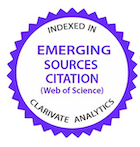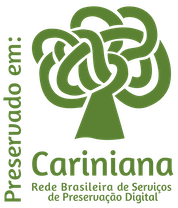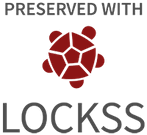Effect of somatotropin and thyroxine on the in vitro development of bovine preantral follicles
DOI:
https://doi.org/10.1590/1809-6891v19e-45994Resumo
The aim of the study was to evaluate the effect of recombinant bovine somatotropin (rbST) and thyroxine (T4) on survival and growth of bovine preantral ovarian follicles (PAOF) cultured in vitro. Ovarian fragments were collected in local abattoirs and immediately fixed for classical histology and transmission electron microscopy (non-cultured control). The other fragments were then cultured in situ for seven days in minimum essential medium alone (MEM+ - cultured control) or in the presence of 1,000 ng/mL rbST and 20 ng/mL T4, isolated or associated. After seven days, there was a reduction (P<0.05) in the percentage of normal follicles in MEM+ alone or with T4. In oocyte diameter, there was a reduction in MEM+ alone. There was no influence (P>0.01) of the medium used on the follicular diameter of the PAOF cultured for seven days. Ultrastructural analysis showed cell damage. In conclusion, the presence of rbST maintains the rate of morphologically normal follicles during the culture for seven days (observed by optical microscopy), but it does not exert beneficial effects on its ultrastructural integrity and oocyte and follicular growth.
Downloads
Downloads
Publicado
Como Citar
Edição
Seção
Licença
Copyright (c) 2018 Ciência Animal Brasileira

Este trabalho está licenciado sob uma licença Creative Commons Attribution 4.0 International License.
Autores que publicam nesta revista concordam com os seguintes termos:
- Autores mantém os direitos autorais e concedem à revista o direito de primeira publicação, com o trabalho simultaneamente licenciado sob a Licença Creative Commons Attribution que permite o compartilhamento do trabalho com reconhecimento da autoria e publicação inicial nesta revista.
- Autores têm autorização para assumir contratos adicionais separadamente, para distribuição não-exclusiva da versão do trabalho publicada nesta revista (ex.: publicar em repositório institucional ou como capítulo de livro), com reconhecimento de autoria e publicação inicial nesta revista.
- Autores têm permissão e são estimulados a publicar e distribuir seu trabalho online (ex.: em repositórios institucionais ou na sua página pessoal) a qualquer ponto antes ou durante o processo editorial, já que isso pode gerar alterações produtivas, bem como aumentar o impacto e a citação do trabalho publicado (Veja O Efeito do Acesso Livre).






























